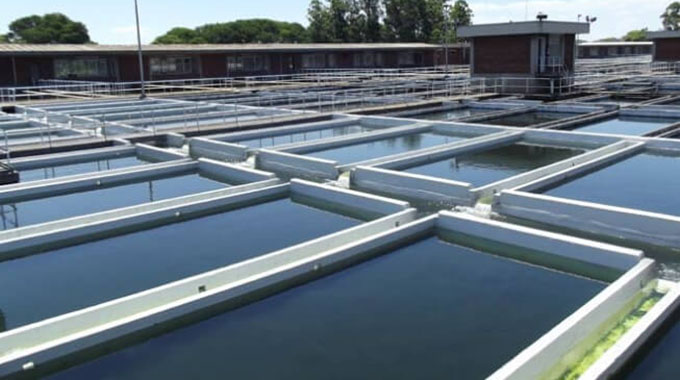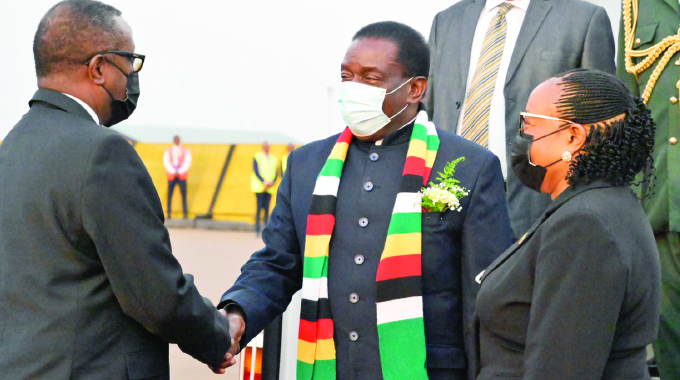Harare’s water system needs maintenance, expansion

Harare’s two water treatment plants have a design capacity to supply 704 million litres of purified water each day, and even with the present population of the metropolitan area this is almost enough to give almost everyone continuous supplies.
But at the moment Harare is treating 295 million litres a day, about 40 percent of what it should be pumping, and even then 60 percent of the total just vanishes mostly through leaking pipes. So out of the design capacity of 704 million litres we see 118 million litres, just over 16 percent.
The problem is easy to define. Maintenance has been neglected, both at the waterworks and along the vast distribution network of pipes, coupled with too few people paying for their water, and that translates into shortage of funds to buy chemicals.
A second problem, adding to the costs, is that Harare and other local authorities dump poorly treated sewage into Manyame and into the streams that eventually flow into Lake Chivero and Lake Manyame, the two major supply dams, although some pollution does reach the paired Seke and Harava Dams that feed the Prince Edward Water Treatment Plant, capable when running properly of treating 90ML a day, while Morton Jaffray should be treating 614ML a day.
Harare, Chitungwiza, Epworth, Ruwa and Norton need to be supplied by these two plants, and while it is estimated that the people and businesses in the five authorities need around 800ML a day, the 700ML that the two plants were designed to produce is, with care, enough while the Government build Kunzvi Dam and other infrastructure is developed to keep pace with the growth of the metropolitan area.
To a very large extent Harare Metropolitan and its surrounding towns are not short of raw water, so the problem is quite different from Bulawayo where the water shortage cannot be fixed until the Gwayi-Shangani water starts flowing around the end of next year.
Admittedly Seke and Harava Dams did dry up when we had two successive droughts, but Prince Edward waterworks only treat less than 15 percent of what Morton Jaffray is supposed to be able to pump out, so while this is significant it is not critical.
What Harare’s five towns need is the end of more than two decades of ignoring maintenance in both the waterworks and the piping system. Then the same more than two decades of refusing to extend and maintain the sewage treatment works, plus adding the required modern works for Chitungwiza and Ruwa, will ensure that the water entering Morton Jaffray is reasonably clean to start with, slashing treatment costs.
Harare’s first piped water supply came from the tiny Cleveland Dam in the headwaters of the Mukuvisi River. Around 3 000ha were declared off limits to people and farming so that the water that flowed into the dam was very clean and germ free.
This water flowed downhill to the top of Hartman Hill in the middle of future botanic gardens, and then down into what is now the city centre. It was so clean no one pushed for treatment. That admittedly only worked because it came from a people free and farm free headwaters, but still. In the 1920s Seke Dam was built and a proper waterworks put in, because we now were using the Manyame flowing through a lot of farms from Marondera way.
That water works was completely rebuilt in the early 1970s and the storage tripled with Harava Dam added just upstream of Seke Dam and able to refill the smaller dam.
But treatment was modest in cost because the water was still remarkably clean. Then in the early 1950s Lake Chivero was built and the first section of the Morton Jaffray waterworks commissioned in 1952.
More sections were added over the decades until the early 1990s when the remarkable city council of the 1980s simply doubled what was there in size and put in the second pipeline to Harare.
All this did require continual upgrade and maintenance, and it was carefully stated at the time that a programme was needed to rebuild the older sections of Morton Jaffray a unit at a time.
A lot of the civil engineering and some of the mechanical equipment could last generations, but other bits needed to be replaced. That was not done. That same 1980s council fixed for a couple of decades the raw water problem by installing activate sludge sewage works at Firle and Crowborough, which allowed what amounted to pure water to be discharged into Lake Chivero.
These were not expanded to keep pace with population and were not properly maintained. Planned modern sewage works at Nyatsime for Chitungwiza and on the Ruwa River for eastern Harare and Ruwa were never built. So Lake Chivero is the most polluted lake in Zimbabwe.
This means that treating the water, even when the waterworks are actually working, is pricey. Apparently Harare now uses 10 chemicals to do this.
Until fairly recently just three were needed: alum, an aluminium compound, was used to coagulate all the junk in the water and deposit it; lime was added to adjust the slightly acid nature of the water and finish cleaning it; and chlorine was added to kill any bugs. The result was clean drinking water flowing down the pipes. The alum was powdered bauxite from a small quarry on the Mozambique border and the lime was local. So the bulk of chemicals were cheap and easy to obtain, in local currency. There might have been impurities but the council chemist would work out the percentage of the active ingredient in each batch and then calculate how much the engineers had to use.
The programme to replace the piping system was functioning. Engineers had a fairly good idea how long the steel pipes laid in the 1920s and 1930s would last and were waiting with the replacements as it became obvious the pipes were rusting through. It was just something you did, but not any more.
Harare had one bright idea, prepaid water meters, and put in four small pilot schemes to choose the best. These have been abandoned and are now just ordinary metres.
Yet Zesa, by putting households and small businesses on prepaid meters, slashed administration costs, eliminated bad debt from the vast number of small users, was now able to chase down the big users who were slow payers and now can maintain its grid and start buying new power stations. Harare could have done the same. Now vast sums are needed to catch up on maintenance and lack of expansion, replace a large swathe of the piping, and ensure the water going into the waterworks is reasonably clean to start with.
Presumably in the end the people will have to pay, but that cost could have been far lower and spread over a great many more years. Incompetence at city council level has already caused much suffering, and at some stage is going to cost a lot of dollars.









Comments